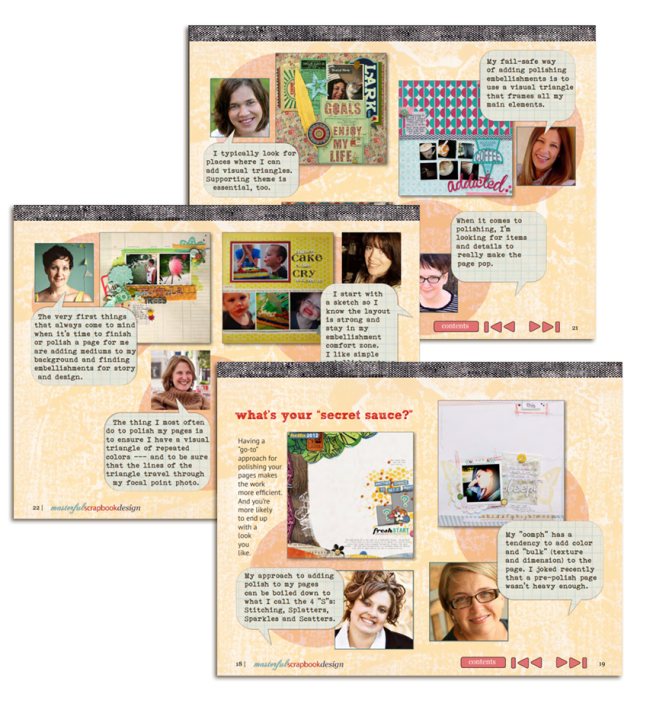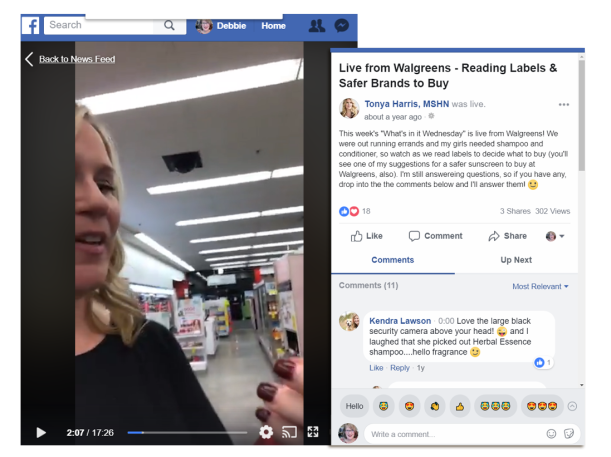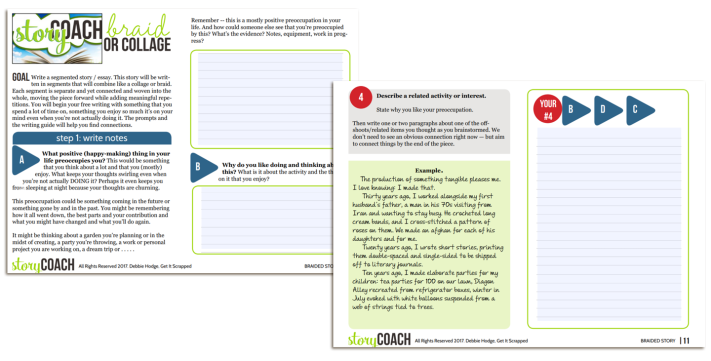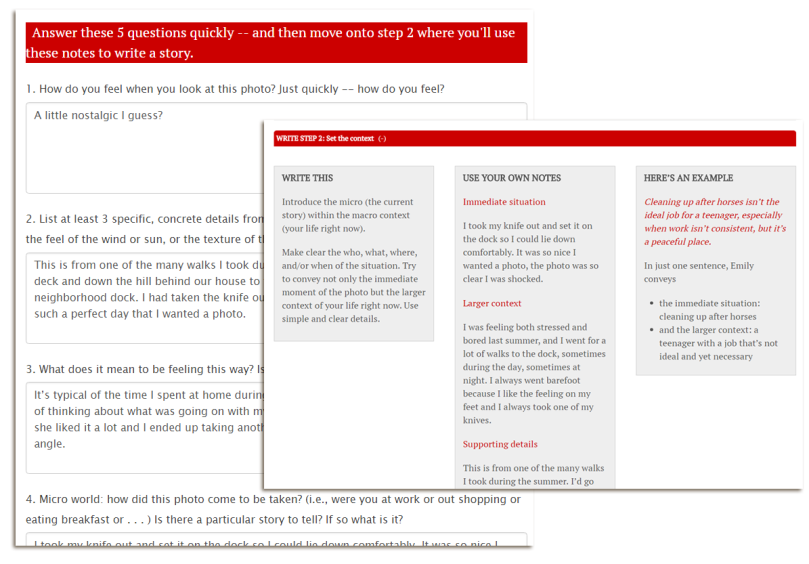
You've got different course delivery tools and approaches available for online teaching than you do for live classroom teaching.
That means you've got opportunities to do things in new ways. Your best teaching will happen when you marry the opportunities that tech provides with your content and student needs.
Here are five ideas for going beyond the basic video and pdf lesson to give your students content, experiences and practice opportunities that get them masterfully achieving their goals.
1. Include an “Experts Say” lesson or supplemental series.
Every once in a while, get your students out of their heads, and exposed to fresh voices who are echoing what you’re teaching. Move your students to contemplate other perspectives.
Ask your “expert” friends from the field in which you’re teaching to record a short audio answering a very specific question.
You could present this in an ebook with their headshots and quotes. You could get them to record their voice in audio and add it into your lesson but with their voices. You could do a complete video or audio interview.
EXAMPLE: Here are three pages from an eBook on Polishing Scrapbook Pages. They feature several “secret sauce” approaches from guest experts.

EXAMPLE: For a 5-day or 5-lesson class that I offer at my site Get It Scrapped, I bring in a guest expert to do a live webinar interview each of the 5 days. So the students get a formal lesson in video and pdf formats in the morning. Then they can attend a webinar or catch an interview recording later in the day.

PROMPTS TO GET YOU STARTED ADDING GUEST EXPERTS:
- What are the types of experts your students would appreciate hearing from?
- Can you identify experts to match those types?
- Who are the experts you've already got connections to?
- What are two or three quick “experts say” questions your students would benefit hearing the answers for?
- What are the topics on which you could do deeper dives and longer interviews?
2. Use Pinterest to curate boards of creative resources that enable field-work-type assignments.
Consider the new assignment possibilities you have for your students when you can collect the raw materials for that assignment from the internet.
While you cannot put copyrighted images onto your site, many can be displayed on a Pinterest board to which you link.
If you’re teaching graphic design and a lesson is on “designing focal points,” you could present your students with a Pinterest board of posters or book covers or magazine layouts and ask them to choose a piece and identify the focal point and report on what makes that element dominant.
If you’re teaching floral arrangement, you could share a board of arrangements and ask your students to pick one and make an arrangement inspired by it–or to pick one and explain the balance of the piece.
EXAMPLE: Here's an assignment and a peek of the Pinterest Board I referred my students to in an advanced design class.

PROMPTS TO GET YOU STARTED USING PINBOARDS:
- What are concepts your students need to master that are on display in expert work?
- What do your students need to practice or implement on to get mastery in the class?
- How can you connect practice assignments with visuals available (and pinnable) on the internet?
- What is the work of analyzing those visuals?
3. Take your students on a real, live field trip.
Are there venues your students will need to navigate on their own with the assignments and skills they get from your class? Or is there a venue they can’t easily visit? Maybe a geological site or a museum or even a supply store.
If you're teaching students how to sew drapes, you could take them (virtually) to the fabric store and show them how to select for pattern, heft, weave–or whatever it is that matters.
Put your phone on a selfie stick, get yourself to the venue, and broadcast the lesson. Walk your students through the things you’d like them to see or experience—and let them ask live questions. It’s almost like they are there themselves! My eCourse Blueprint student Lynn Dean who teaches homeschoolers and their parents at Hands On Homeschool Resources had this idea for taking her students on field trips to historical sites and museums.
EXAMPLE. Tonya Harris, MSHN is an environmental toxins specialist who headed to Walgreen's on live video to read labels and teach her tribe how to do the same.

PROMPTS TO GET YOU STARTED WITH FIELD TRIPS:
- What is the on-site work or practice your students need? What are the associated venues?
- What can you point out to your students during your own video visit that they wouldn't immediately understand, themselves?
4. Systematize a creative or coaching process with forms and guided lessons.
If you’ve got a process you’ve taken a student or client through in one-on-one work, let’s think about how to move that work into a guided format that takes your live presence out of the equation.
You can start by presenting prompts to get your online student to generate the thoughts or answers or creative elements they’ll need to move forward. While you might have done this in a live interview or creative session in the past, for your online course use a form and instructions that the student completes on their own.
Then present them a process for inserting those raw materials and answers they generated into a guided process that yields an end-product.
EXAMPLE. I’ve made several classes on creative essay writing by presenting very specific prompts for free writing. Once those prompts are answered (in an online or printable form), I present a guided lesson that has students pulling from their free writIng to create a completed essay.
Here's how it works with paper forms. The students goes through the worksheets, answering prompts. Each prompt is identified by a unique letter code (A, B, C . . .). Once they've answered the prompts, they use the guide which tells them what to write first and second and third. That instruction also tells them which of their prompted writings to pull from and provides and example. In this example, step 4 of the writing pulls from the prompts B, D, and C.

Here's how it works with online forms. The students answers prompts at first. Then they get a step-by-step writing guide that: 1. tells them what to do, 2. presents back their written work, and 3. provides and example.

PROMPTS TO GET YOU STARTED:
- What is the step-by-step process you use in live coaching or instruction?
- What are the questions you ask in that process?
- How are your student or client responses woven into your prescription for moving forward?
5. Create a “Choose Your Own Adventure” experience for your students with “learning tracks.”
This is a great approach when you’ve got a really big class or a membership library with LOTS of resources and lessons. It also works well when you're attracting students with slightly different “avatars.”
NOTE: This is a strategy for when you've been teaching for a while. When you're starting out, focus on just one segment or avatar and create for them only.
If you've been teaching for a while, though, and are ready for this approach, start by understanding your “avatars” or the segments of your market. Then map out “learning tracks” that are right for each of them.
EXAMPLE: I teach a class at Get It Scrapped called “The Motivated & Efficient Scrapbooker” and it includes lessons and materials that motivate someone to scrapbook while giving them tools to do this work efficiently.
There are three types of scrapbookers who could benefit from this class: There are: 1) the scrapbookers who cannot find time to create; 2) the scrapbookers who find the work takes too long; and 3) the scrapbookers who feels unmotivated and in a rut. Each is described below and each has their own “path” through the content. The path for the unmotivated scrapbooker is shown below.

PROMPTS TO GET YOU STARTED WITH LEARNING TRACKS:
- Identify the segments of your audiences and create a portrait of each avatar.
- Map out a path through your content that best serves each.
Which one of these can you incorporate into your teaching?
Which of these ideas got you excited about delivering a little pizzazz for your students?
Click here to download our FREE guide and see exactly how to combine cool tech possibilities for online teaching with your unique teaching style and vision to give your students lessons that excite and get them completing your course with success.
